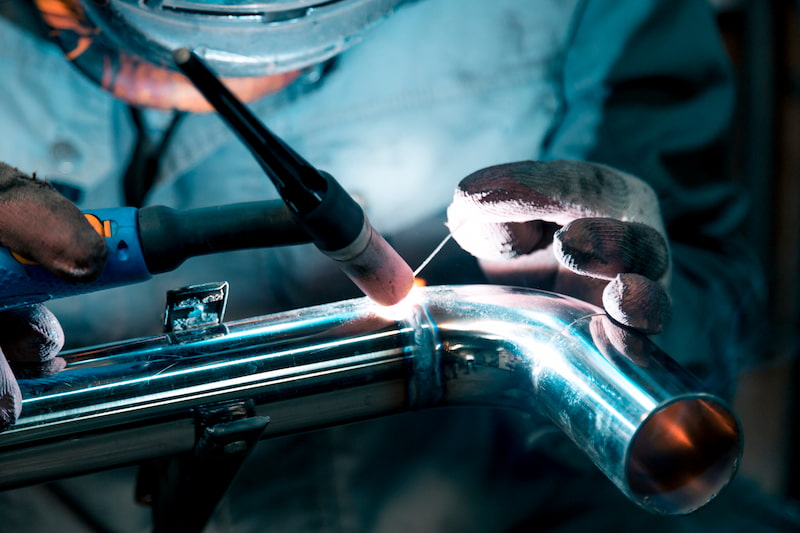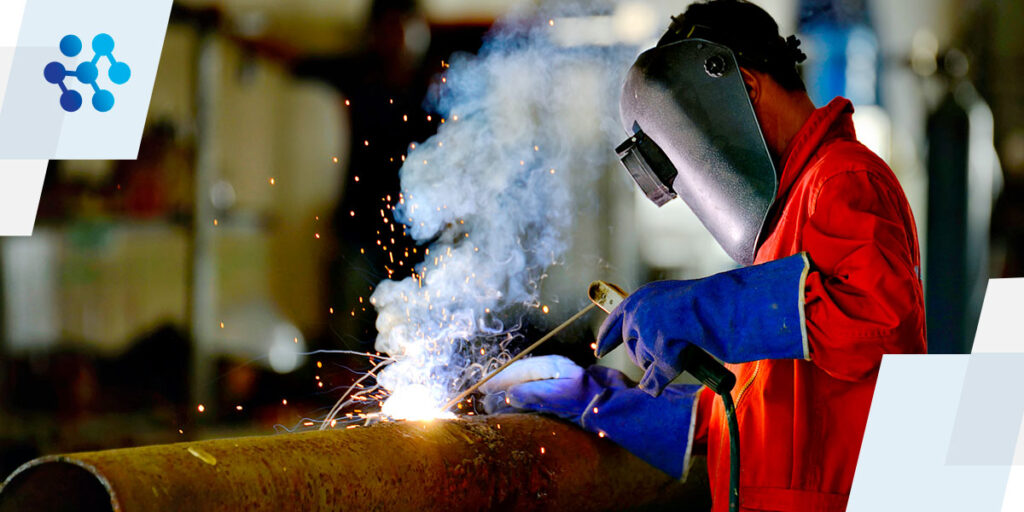Common Welding Repair Work Issues and How to Address Them Efficiently
Welding repair work typically encounter a variety of problems that can jeopardize the integrity of the final product. Common problems include insufficient penetration, porosity, and misalignment, among others. Each problem presents unique challenges that require certain strategies for resolution. Recognizing these concerns is vital for welders intending to improve their abilities and end results. This discussion will explore these usual welding repair work concerns and reliable approaches to address them.
Insufficient Infiltration
Insufficient penetration occurs when the weld steel fails to completely fuse with the base product, resulting in weak joints and potential architectural failings. This concern typically comes from not enough warm input, incorrect electrode angle, or improper welding rate. Welders might run into insufficient penetration as a result of a mistake of the essential parameters for a particular material thickness or type. Additionally, contamination on the base product's surface can prevent reliable bonding, intensifying the problem. To address insufficient penetration, welders need to guarantee appropriate setups on their devices and maintain a tidy job surface. Regular assessment of welds is suggested to recognize any type of deficiencies early, enabling prompt adjustments and the avoidance of compromised structural honesty in welded settings up.
Porosity
Porosity is an usual problem in bonded joints that manifests as tiny gas bubbles caught within the weld metal. This problem can compromise the honesty of the weld, bring about lowered strength and potential failing under stress and anxiety. Montana Mobile Welding and Repair. Porosity normally develops from contamination, moisture, or incorrect welding techniques, which allow gases to escape into the liquified weld pool. To attend to porosity, welders must assure appropriate surface area preparation, preserve a clean working environment, and make use of suitable welding specifications. Furthermore, picking the right filler material and shielding gas can mitigate gas entrapment. Regular assessment and screening of welds can assist recognize porosity early, ensuring prompt restorative activities are taken, therefore preserving the quality and reliability of the welded framework
Imbalance
Imbalance in welding can arise from various factors, consisting of incorrect arrangement and thermal development. Understanding the source is essential for efficient resolution. Several correction strategies are readily available to realign elements and guarantee structural honesty.
Root causes of Imbalance
Welding misalignment commonly originates from a variety of underlying problems that can compromise structural honesty. One key cause is inappropriate fit-up of parts before welding, which can cause voids and uneven surfaces. Variations in thermal growth during the welding procedure can also result in distortion, particularly if the materials being joined have different coefficients of development. Furthermore, insufficient securing and fixturing may fail to hold components firmly in position, leading to activity throughout welding. Improperly maintained devices, including welding machines and devices, may present variances in the weld grain, additional contributing to imbalance. Operator error, stemming from not enough training or experience, can likewise play a significant duty in developing misaligned welds.

Correction Techniques Offered
Resolving imbalance properly calls for a mix of corrective methods customized to the certain issues available. One common approach is the usage of jigs or components to hold parts in the appropriate setting throughout welding, guaranteeing regular placement. In addition, pre-heating the products can aid minimize distortion and improve fit-up. For considerable misalignment, mechanical adjustment strategies, such as making use of hydraulic jacks or clamps, can be used to correct the setting before welding. Post-weld warm therapy might additionally be essential to alleviate tensions caused by misalignment. Mindful assessment and adjustment throughout the setup stage can stop misalignment issues from ending up being significant troubles, promoting a smoother welding procedure and boosting overall structural integrity.
Distortion
Distortion is an usual difficulty in welding that can arise from numerous variables, including unequal cooling and heating. Recognizing the reasons for distortion is crucial for applying efficient avoidance methods. Resolving this concern not just boosts structural stability but also improves the total top quality of the weld.
Reasons for Distortion
When based on the intense warm of welding, products typically undertake changes that can bring about distortion. This sensation mostly arises from thermal expansion and tightening throughout the welding procedure. As the weld location warms up, the product increases; upon cooling, it gets, which can create internal stress and anxieties. In enhancement, unequal heating across a workpiece can intensify these stress and anxieties, resulting in bending or flexing. The sort of product also plays a considerable duty; steels with varying thermal conductivity and coefficients of development might react in different ways, resulting in unforeseeable distortions. Poor joint layout and insufficient fixturing can contribute to misalignment throughout welding, raising the probability of distortion. Comprehending these reasons is necessary for reliable welding repair work and avoidance approaches.
Prevention Techniques
Reliable avoidance strategies for distortion during welding concentrate on managing heat input and making sure appropriate joint layout. Keeping a regular warm input helps to decrease thermal development and tightening, which can lead to distortion. Making use of techniques such as pre-heating the work surface can additionally lower the temperature level slope, promoting uniform heating. Furthermore, selecting proper joint designs, such as T-joints or lap joints, can boost security and lower anxiety focus. Applying correct fixturing to protect the workpieces in position better aids in keeping alignment throughout the welding process. Finally, staggered welding series can distribute warm a lot more equally, preventing localized distortion. By using these strategies, welders can substantially lower the possibility of distortion and boost the overall high quality of their welds.
Cracking
Splitting is an usual issue come across in welding repair work, typically resulting from different variables such as incorrect air conditioning rates, product option, or insufficient joint prep work. The occurrence of fractures can considerably jeopardize the integrity of the weld, leading to potential failings during procedure. To address this concern, welders have to initially examine the origin, ensuring that products are suitable and appropriately picked for the certain application. Furthermore, controlling the air conditioning price throughout the welding process is crucial; quick cooling can induce anxiety and cause fracturing. Proper joint style and prep work also add to lessening the threat. Implementing these approaches can enhance weld high quality and toughness, ultimately lowering the chance of splitting in completed weldments.

Insufficient Combination
A considerable issue in welding fixings is incomplete fusion, which occurs when the weld metal does not properly bond with the base material or previous weld passes - Belgrade Welding. This issue can lead to weaknesses in the joint, possibly compromising the integrity of the bonded framework. Elements adding to insufficient blend consist of insufficient warm input, improper welding method, and contamination of the surfaces being joined. To resolve this issue efficiently, welders must assure correct pre-weld cleaning and surface area prep work, in addition to adjust their welding criteria to accomplish adequate infiltration and blend. Normal inspection during the welding process can also assist recognize incomplete fusion early, permitting for timely rehabilitative measures to enhance the general quality of the weld
Overheating
While welding repair services can boost structural honesty, overheating offers a substantial obstacle that can lead to material degradation. Extreme heat during welding can check over here modify the mechanical residential properties of metals, resulting in lowered stamina, raised brittleness, and warping. This phenomenon is especially critical in high-stress applications where architectural dependability is paramount. Recognizing getting too hot can involve visual inspections for staining or distortion, along with keeping an eye on temperature level throughout the welding process. To alleviate the risks related to overheating, welders must utilize suitable strategies, such as controlling warmth input, readjusting travel rate, and making use of appropriate filler products. Furthermore, applying pre- and post-weld warmth therapies can assist bring back material residential properties and enhance the general top quality of the repair work, guaranteeing long-term efficiency and safety and security.
Frequently Asked Questions
What Are the Typical Indicators of a Welding Defect?

Just How Can I Examine My Welds for High quality?
To test welds for high quality, one can make use of aesthetic evaluations, ultrasonic screening, and radiographic techniques. Each technique guarantees architectural stability, more helpful hints recognizes problems, and confirms adherence to specified standards, ultimately enhancing the dependability of the welded joints.
What Safety Preventative Measures Should I Take While Welding?
When welding, one should prioritize security by putting on suitable individual protective tools, making sure correct air flow, protecting combustible products away, maintaining a tidy work area, and being aware of environments to avoid mishaps and injuries.
Can I Repair a Weld Without Renovating the Entire Joint?
Repairing a weld without renovating the entire joint is possible, depending upon the damage (Montana Mobile Welding and Repair Fabrication). Strategies such as grinding, including filler product, or making use of a welding process can successfully resolve specific problems while maintaining the surrounding framework
What Devices Are Important for Efficient Welding Repairs?
Necessary tools for effective welding repair services consist of a welding equipment, wire brush, grinder, protective equipment, clamps, and filler materials. Each tool plays a crucial function in ensuring high quality and safety and security during the repair service procedure. Porosity generally emerges from contamination, moisture, or incorrect welding strategies, which enable gases to leave into the molten weld boc mig welder pool. Badly conserved equipment, consisting of welding makers and tools, might introduce variances in the weld grain, more contributing to imbalance. When subjected to the intense heat of welding, products frequently undergo adjustments that can lead to distortion. Fracturing is a typical issue run into in welding repairs, often resulting from numerous factors such as improper cooling prices, material choice, or inadequate joint preparation. A considerable problem in welding fixings is insufficient blend, which takes place when the weld steel does not adequately bond with the base product or previous weld passes.